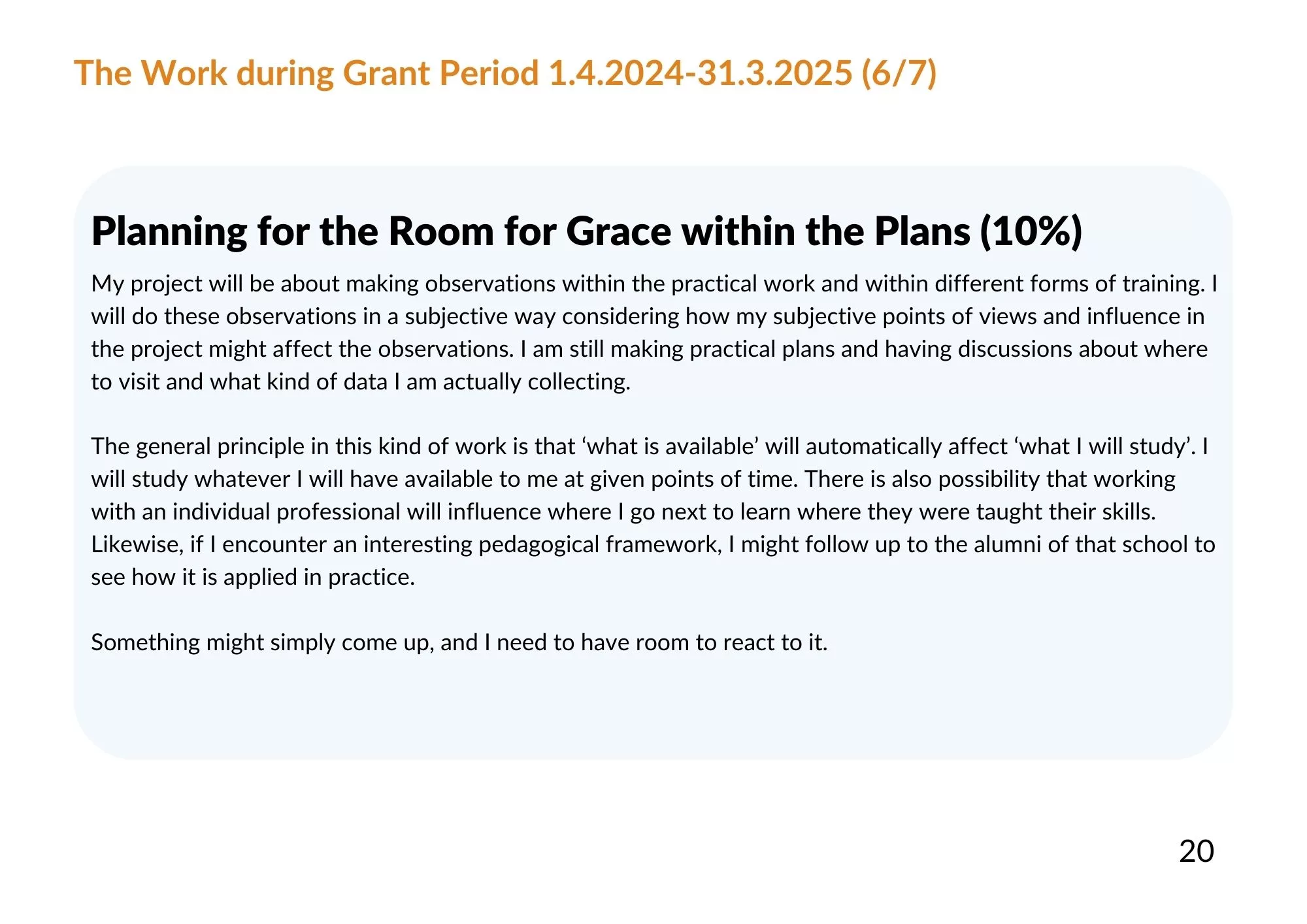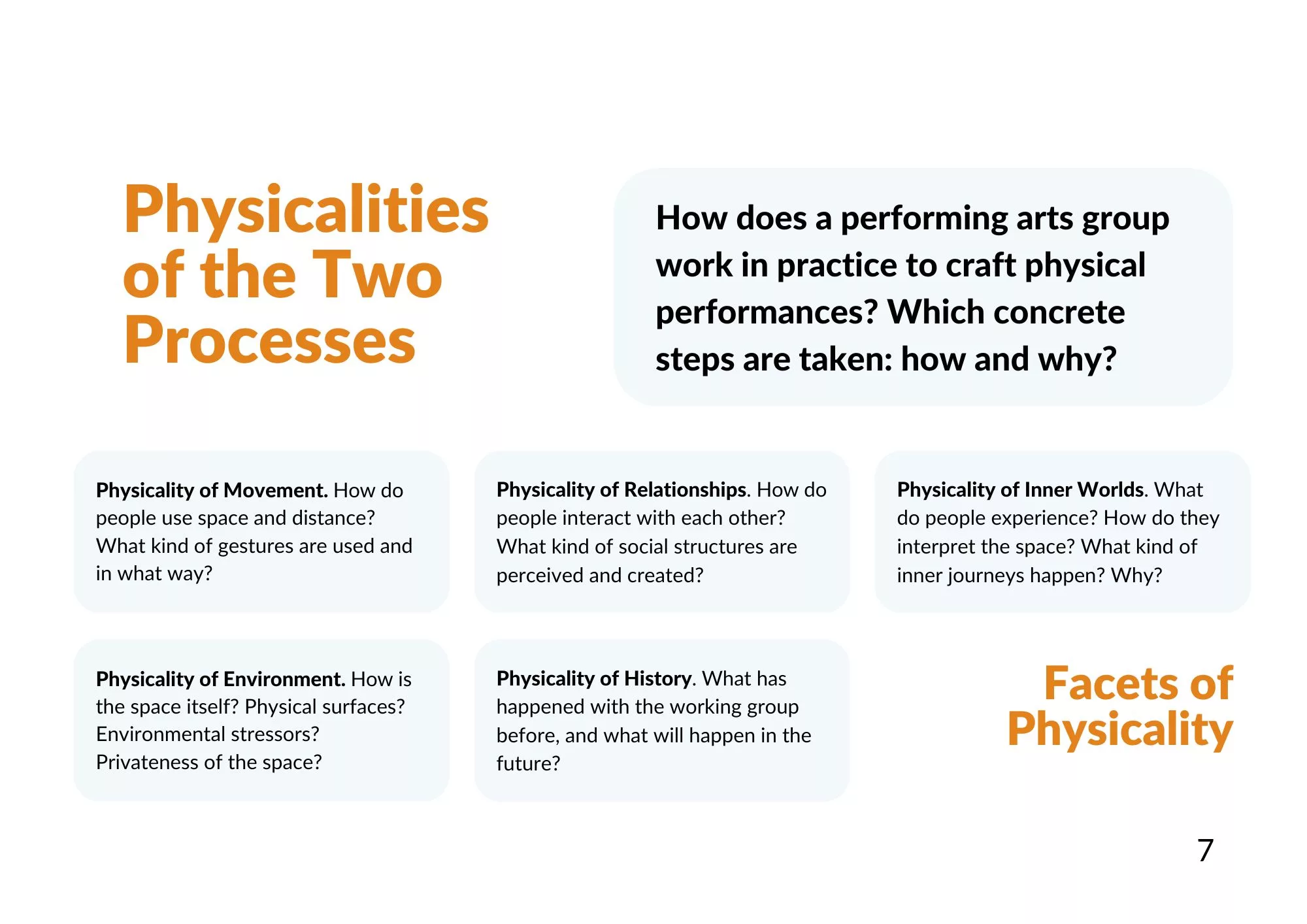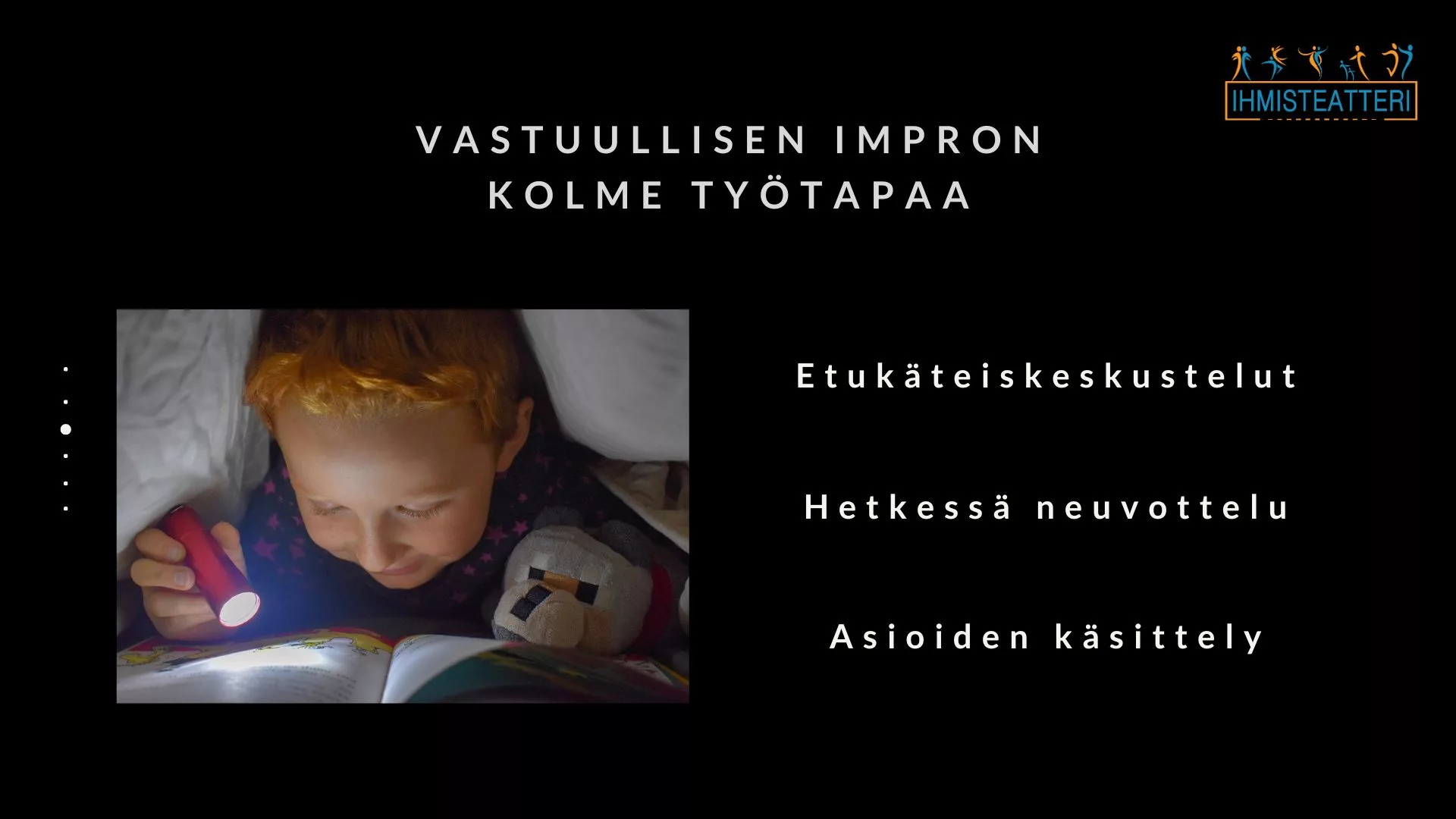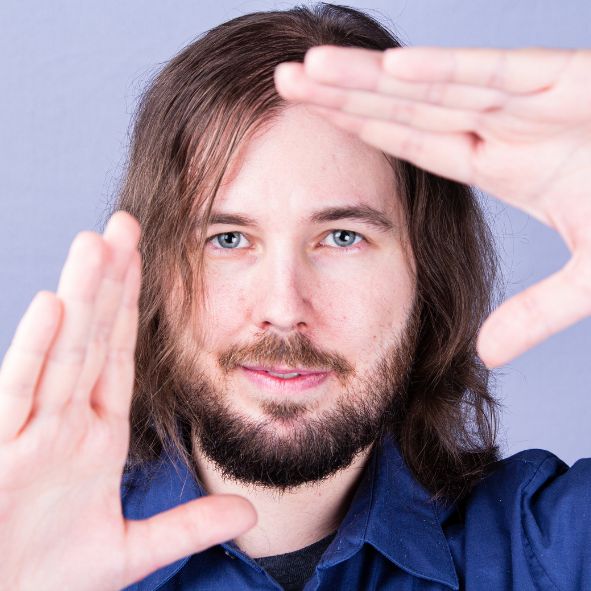
Way to the Personal Process
This is a part of my process within A Memory Lane to Analyze the Physicality. See more about the basic premises and ideas behind this blog here. I present the Stockholm University of the Arts Project I will be mentioning in this article is in more detail here. This time time I will be thinking about my approach in more detail. I will present some possible topics that I am currently leaning towards. Then I tell a bit more about the directions I am interested in.
The groups and individuals
I have always been interested in the human beings. My idea of good time is to discover new fascinating phenomena of human behaviour. I have noticed that if there are more than (about) six individuals in my ensemble, my process will need me to put more effort and time for remembering everyone and not just using mental shortcuts to remember everyone.
I can naturally treat larger groups as ‘a collection of people’. This means I think it as a socially and physically motivated organism consisting of these people. Ensembles work for me very differently from how the individuals work, and I would be interested in finding some brain science to explain it.
In practice this means that I feel like I can either study groups or individuals with one set of tools. If I want to swift my perspective between the two points of view, I need two complementary toolsets. It makes sense to me that considering the things from both of these perspectives might be very fruitful. Groups consist of individuals and individuals contribute to the group itself, so studying one without the other wouldn’t make sense.
The two time scales
I have two basic time scales that interest me with this work. First scale is about the personal level. It fascinates me. What kind of journeys of life-long learning do exist? How do they form the artist? What kind of structures are created in the moment by the circumstances of a situation?
A moment of time
Circumstances of a situation, or context, are something that I can perceive and define myself. Naturally I cannot record it in full detail as cannot do the work without any personal bias.
I can actually perceive a limited amount of information in a moment. But if I pick apart the physicality of the moment, the process gives me a lot of information about what happens. I already discussed this in the second draft of my research plan. Adding some history to a moment would give me an understanding of why some physical choices are made in the moment. Physicality of the past moments lingers with any chosen moment of time. This lingering interests me greatly.
Understanding the flow of moments feels like something that helps me “hold the space”. Holding the space is a pedagogical concept which I understand to mean doing small physical choices to control the ebb and flow of a lesson. In this research my skills in holding the space could form a basis of what I will be looking at.
The journeys through time
The second time scale of my research must be about longer journeys. What happens in the space builds on the individuality and the experiences of the people. It would be dishonest if I didn’t in some way consider their past experiences.
I feel that discussing things with people themselves is the only way to understand the finer details of a situation. The content of this discussion is still open to me.
If I remember correctly from my personality psychology studies, ‘a personality’ could be defined through three variables. These are personal narratives (‘I am…’-stories), personality traits (measureable traits of permanent nature, like Big Five) and behavioural patterns (what a person does, how they think etc). I must naturally still recheck the science behind this. I feel like what I would be interested in all three of these. I don’t have the theoretical background needed for their practical application. They do still give me a scientifically definable picture which would give some weight to my research.
The spectrums of humanity
I would also be personally very curious of how neurospectrum affects how people work. Artists with an autism or ADHD might be able to offer some interesting views on how the situations affect them. I feel like this kind of idea could be useful to creating stronger, more colourful artistic spaces.
Still, I feel like I am a story-crafter with a superpower in listening. Can I create data out of stories I hear from people’s lived experience? I would love to treat their personal tendencies and interpretations “as they are”, without needing to use psychological models to put extra layer onto them. Naturally, psychological models can offer me some general explanations of what happens and help predict the dynamics of future spaces. They might still not offer a good starting point for this kind of research where I am after the fine details.
I am interested also on the discussion about journeys length and depth. I am only interested in the moments and not the personal lives per se. The lives of the people physicalizing the moments do still have their lives, and their past experiences will affect how they experience and act in a room. As a teacher, I anyways seldom have or need a privilege to see to the past of a person so it feels unnecessary to delve too deep into it while doing research on the moments.
Finding the essential
As an artist and as a human being, I would want my research to serve a better world in some way. It is about being after a study of contextualized moments. Then I have to just decide what level of context I choose for this research. My intuition tells me that I still lack clear intent, the ultimate purpose for my research. I am not sure if I actually need one at this point, but I cannot just ignore the discussion.
I have made two preliminary decisions about my study: first I want to study collaborative artistic processes in which I am part of and then to let the processes present themselves. These two decisions make me slightly reluctant to decide a strict framework of physicality to study as I haven’t yet entered the spaces. One purpose of this blog seems to be to make sure that I have made flexible enough but also clear enough study plans to actually analyze the reality I am presented with.
I also feel that I would be most interested in serving specific intents that come from the every single working group. As an example of an goal to create a space of listening to each other. What are the concrete steps they take to shape that kind of environment: how do they practice that particular choice in that particular group?
I could in theory record every action that happens in the physical space. And have discussions with the working group about the kind of space they seek to create, and all the practical tools they plan to use for it. Then I could continue the discussion afterwards with each and every group member about how they experienced the particular choices. A good tactic would be to inquire what is it that in those choices made the person feel that way.
Study of Intentional Spaces?
Idea to study the intentionally-created spaces and the choices we do to shape those spaces interests me very much.
Vocalizing the intent of the space without going to the practical, physical choices (see Facets of Physicality) might be an interesting choice. I am unsure how well it would work, and if a process to go into a more detailed definition might be needed. Similarly to when a person navigates consent, we might need to establish a [metaphysical] container. A container that defines what is allowed in the space – or what might not be allowed in the space.
Through my experience with intimacy direction practices I have noticed that it is often more useful to define what kind of concrete behaviour is expected within the container. If a person knows the areas where they are allowed to touch the other person, and the ways they are allowed to deliver that touch, they can act according to that with ease. If I only know what not to do, there exists always an uncertainty about the unsaid intentions.
We can create an intentional space. This could mean having a discussion what kind of behavioural patterns we expect in that space. It could include defining the rules to navigating the space.
My thoughts on professional spaces
I used to teach as a part of my Ihmislähtöisen impron työtavat (human-based improv practices) that any responsible improv needs three sets of practices to function. First set defines how we prepare the space to serve its purpose (1). The second defines how we navigate the space in the moment (2). And the third type of practice means navigating it after the reality and the space clash (3). These principles tend to work for any process with human beings. See some screenshots from the presentations before.
These practices will always be there whether we speak of them or not. Sometimes they are out-spoken and written rules of conduct, safer space policy or something more formal. Other times they base themselves on something less formal. These laws, regulations and best practices could just be something everyone knows because of their previous experiences.
Intentional professional spaces
I am expecting the spaces to be different kinds of safer or braver spaces or professional spaces. Numerous different kinds of professional spaces exist with very different processses. They are built based on participants previous experiences in similar spaces or on discussions had at the space itself.
It might be interesting to look at how the assumptions based on previous experiences and training will provide room to the choices people make. How possible discussions are navigated. I am currently considering the study of professional spaces as one of the point of views for my research. Writing about it already now has helped me to collect my thoughts a bit to prepare for a smooth start.
Memory Lane Recap
In this article, I have discussed three aspects of what I am currently interested in. First was Individual-group dichotomy. Then the different lengths of the processes I wish to study (moments vs individual’s life journey). In the end I discussed shortly the intentionally defined professional spaces. I must return to this later on.
The blog A Memory Lane to the Physicalitytells a story about my preparations for the journey within Stockholm University of the Arts Programme. I will be writing it as I prepare for the project in order to keep things practical. Project starts in 2024.
A Memory Lane is an introspective blog, inaccurate and rough, but thrives to add transparency and communication to my process. That is why I will be looking forward to hearing any comments or observations that you might have.
Thank you for joining this journey with me. Looking forward to continuing it with you!




